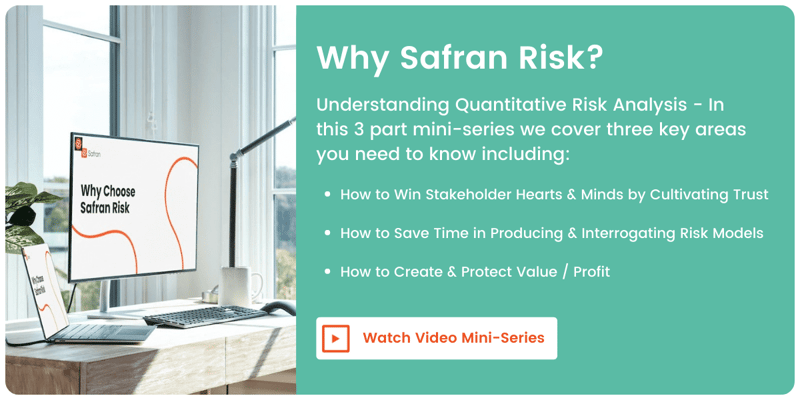Digital disruption - anticipating the fourth industrial revolution
Compared with other industries, construction is a technological laggard. The construction industry has not yet shown the dramatic productivity gains demonstrated by other industries from either the electrification or digitization of production lines. However, the stage is set for dramatic change. This coming decade there is much anticipation for what the World Economic Forum refers to as The Fourth Industrial Revolution, but this article will focus on just one aspect, digital disruption.
When project professionals discuss digital disruption, the relevant moving parts are usually addressed under the following three headings: people, process and technology. When we think of the interplay of each side of this golden triangle, there is something each of us can do to evolve and continually improve.
Team performance and late project delivery
A considerable body of knowledge has been developed over recent decades by professional associations and institutions. Subsequently, discussion about process and technology is largely seen as black and white. The gray area that has emerged in recent years is that concerning people. Traditionally, the influence of psychology on team performance has not been a topic for discussion or review, however ever-expanding project performance datasets are providing deeper insight and understanding (see our blog post on Collecting Data That Matters.
Specifically, Professor Bent Flyvbjerg and his team have produced numerous studies to highlight that, despite improving delivery processes, projects are commonly completed late and over budget. Data, highlighting that projects are late more often than not, lead to the logical conclusion that technical or random errors alone cannot be the reason. Instead, Flyvbjerg quips, the biggest risk is you. Project failure, he explains, is best explained by the underestimation of risk, attributed to overconfidence or political bias.
Finding the optimal balance between the three elements of the golden triangle can help avoid the underestimation of risk and improve an organization’s cost prediction capability. These three elements, including their enablers and benefits, are summarized as follows:
- People
- Risk Management Culture – The organization acknowledges a responsibility to manage “uncertainty that matters” within their sphere of influence and recognizes the value in curating risk data, throughout the project delivery lifecycle.
- Data Literacy -- Teams actively develop their ability to analyze probable outcomes and learn from past experience to deliver increasingly predictable results. See our blog post on Data Literacy for more on this.
- Process
- Data Standards -- Teams employ data standards that ensure good data quality and the timely development of significantly fewer or minimum viable metrics (MVM) to facilitate data-driven decision-making.
- Portfolio Risk Management -- Teams ensure the efficient allocation of resources, both by accurately quantifying risk and by providing resilience against business-as-usual threats at all times, at an enterprise (not just at a project) level. See our Risk Culture blog post for more.
- Technology
- Descriptive Analytics – Teams employ technologies to generate conventional probabilistic insight, reporting a range of probable cost and schedule outcomes. See our blog post on Bonini’s Paradox for more insight.
- Advanced Analytics -- Teams employ technologies that also facilitate inductive reasoning, and reveal conventionally hidden opportunities to leverage actionable insights.
Rewarding and supporting good performance
By establishing these enablers for project teams, leaders indirectly nurture and reward the performers on their best projects who exhibit the culture, curiosity and growth mindset that we explored in our previous blog posts on Risk Culture and Promoting a Discovery and Growth Mindset. Used in tandem, capability performance assessments and capability improvement planning can help identify where intervention and corrective action may be warranted or where success stories need to be broadcast and shared for wider benefit.
Progressive, leading-edge, PMOs who actively work to find their optimal balance between people, process and technology are likely to uncover beneficial side-effects in future-proofing their project controls function, as I set out in my introduction to this series, 9 Strategies for Continually Improving Project Performance Capabilities. They are likely to be better placed to attract and retain talent. In March 2022, the McKinsey Quarterly highlighted a new wave of voluntary worker attrition where, in their quest for a better work-life balance, many are choosing life. McKinsey advises, “Now more than ever, companies must redefine their attraction and retention strategies and build a value proposition that takes employees’ whole lives into account.” Today’s tech savvy workers are not excited by the prospect of using manually intensive, slow, unsupported and error prone legacy tools such as OPRA (Oracle Project Risk Analysis). Providing best-in-class tools such as Safran Risk can not only attract high performers already adept at using them, it can also provide others with an opportunity for growth.
Remember, doubt, curiosity and continual improvement are your friends in disruptive times. If you are a senior leader within the construction or engineering sectors, consider equipping your project management delivery teams with best-in-class tools, so that your organization is genuinely ready for the fourth industrial revolution. If you would like to discuss the features of Safran Risk in more detail, contact one of our experts and let us show you the future of Risk best-practice.




